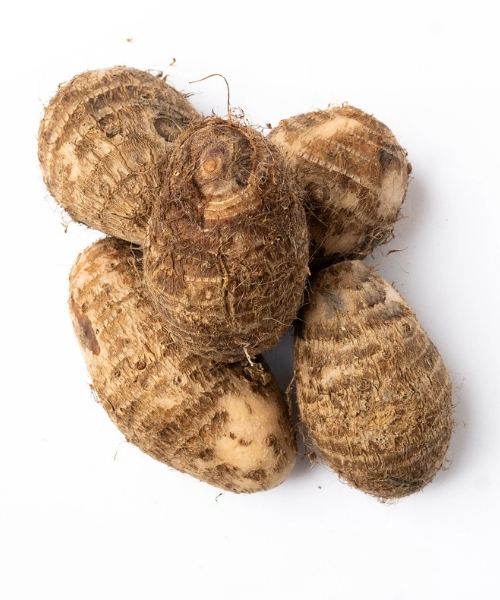A Lesser-Known Root Vegetable with Unique Culinary Appeal.


A Lesser-Known Root Vegetable with Unique Culinary Appeal.


Eddoes, sometimes referred to as eddo or edo, are a root vegetable that belongs to the Araceae family, which includes taro and other tubers. While not as widely recognized as potatoes or carrots, eddoes are a staple in many cuisines worldwide, especially in the Caribbean, South Asia, and West Africa. In this article, we will delve into the origins of eddoes, their nutritional benefits, culinary uses, and cultural significance.
Origins and Cultivation
Eddoes (Colocasia esculenta var. antiquorum) are believed to have originated in Southeast Asia and spread to other tropical and subtropical regions through ancient trade routes and migration. Eddoes are closely related to taro but are typically smaller, with a denser, more fibrous texture. They grow well in humid climates and are cultivated in regions with consistent rainfall and fertile soil.
Eddoes grow from rhizomes and produce distinctive leaves resembling those of other aroids. The root vegetable has a rough, hairy exterior with a white or cream-colored interior. Eddoes can be planted in clusters and require minimal maintenance, making them a viable crop in many agricultural settings.
Nutritional Profile
Eddoes are a nutrient-dense root vegetable, providing a range of essential vitamins and minerals. They are an excellent source of carbohydrates, which makes them a significant energy source for many people in tropical regions. Additionally, eddoes are high in fiber, supporting digestive health.
Key nutrients found in eddoes include:
- Vitamin C: This antioxidant helps boost the immune system and supports skin health.
- Potassium: A vital mineral for regulating blood pressure and muscle function.
- Magnesium: Important for maintaining healthy nerve and muscle function.
- Calcium: Contributes to bone health and strength.
Eddoes are also naturally low in fat and contain a moderate amount of protein. Due to their high fiber content, they are beneficial for those seeking to maintain a healthy digestive system.
Culinary Uses
Eddoes are a versatile ingredient that can be used in a variety of dishes. When cooked, they have a slightly nutty flavor and a creamy texture, similar to taro but with a more robust taste. Here are some popular culinary uses for eddoes:
1. Boiled Eddoes
One of the simplest ways to prepare eddoes is by boiling them until tender. Boiled eddoes can be mashed and used as a base for other dishes or served as a side with a touch of butter or olive oil.
2. Eddoes Curry
Eddoes are a common ingredient in curries, particularly in South Asian cuisine. They absorb flavors well, making them an excellent addition to spicy dishes. Eddoes curry can be served with rice or roti, providing a hearty and satisfying meal.
3. Eddoes Soup
Eddoes can be used to create thick, hearty soups. Their starchy consistency helps thicken the broth, and they pair well with other vegetables and proteins. Eddoes soup is a comforting dish often enjoyed in the Caribbean and West Africa.
4. Fried Eddoes
Eddoes can be sliced and fried to create crispy chips or fries. This preparation method brings out their natural flavor and offers a crunchy texture. Fried eddoes can be seasoned with various spices and served as a snack or side dish.
5. Eddoes Stew
Eddoes are also used in stews, where they add texture and flavor. In Caribbean and West African cuisine, eddoes are commonly cooked with meats and vegetables to create a rich and satisfying stew.
Cultural Significance
Eddoes hold cultural significance in many regions, where they are a staple in traditional dishes and family meals. In the Caribbean, eddoes are often included in callaloo, a popular dish made with leafy greens and other vegetables. In West Africa, eddoes are used in various stews and soups, providing a source of nourishment for families.
In South Asian cuisine, eddoes are used in curries and other savory dishes, contributing to the rich tapestry of flavors found in the region's culinary traditions. These cultural connections make eddoes more than just a root vegetable; they are a symbol of heritage and community.
Eddoes may not be as widely known as some other root vegetables, but they offer a unique flavor profile and a range of culinary applications. With their nutritional benefits and versatility in the kitchen, eddoes are a valuable addition to any diet. Whether boiled, fried, or used in curries and stews, eddoes bring a distinct taste and texture to dishes across the globe. As you explore different cuisines, consider incorporating eddoes into your meals to experience their unique appeal and cultural significance.